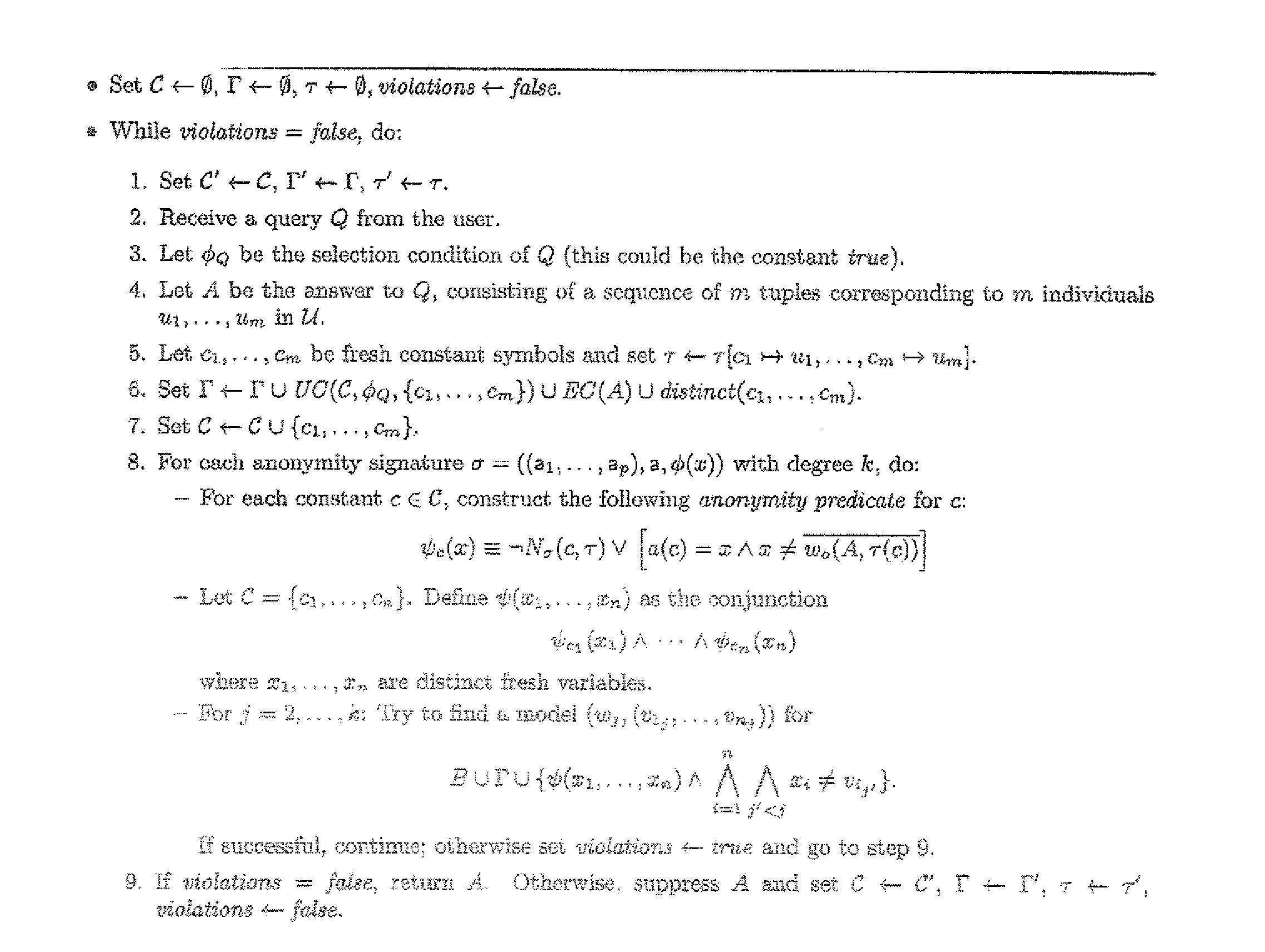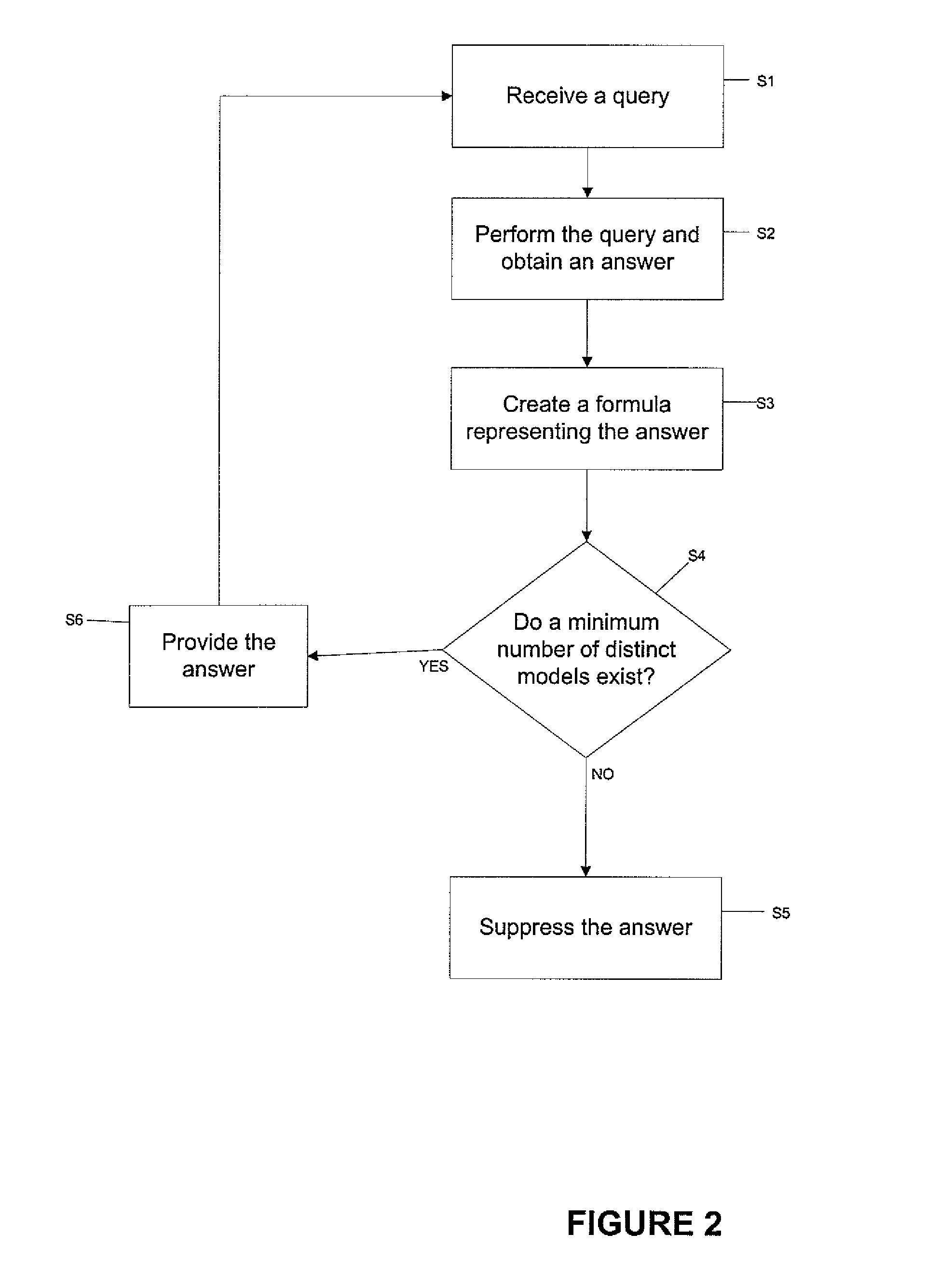Model-theoretic approach to data anonymity and inference control
a model-theoretic approach and data anonymity technology, applied in the field of secure data management, can solve problems such as low database usefulness, compromise sensitive information, and attracted a great deal of attention
- Summary
- Abstract
- Description
- Claims
- Application Information
AI Technical Summary
Benefits of technology
Problems solved by technology
Method used
Image
Examples
Embodiment Construction
[0018]What does it mean to say that an agent x does not know the value v of an attribute A? As discussed in detail below, it can mean that there is at least one other value v′≠v such that A=v′ is consistent with what x knows. For example, suppose that A represents the results of a cancer biopsy for Alice, so that there are only two possible values for A: 0 (negative) and 1 (positive). Suppose that the actual value v is 0, i.e., the result is negative. What does it mean to say that x does not know this information? It can mean that there is another value v′, distinct from v, such that A=v′ is consistent with what x knows. In this case, of course, v′=1. Accordingly, to say that x does not know the value of A is to say that A=1 is consistent with what x knows.
[0019]Further, suppose that x is a user querying a database and accumulating answers to those queries over time. Write Kx to denote the set of all answers that x has received so far, and let B be a set of pertinent background know...
PUM
 Login to View More
Login to View More Abstract
Description
Claims
Application Information
 Login to View More
Login to View More - R&D
- Intellectual Property
- Life Sciences
- Materials
- Tech Scout
- Unparalleled Data Quality
- Higher Quality Content
- 60% Fewer Hallucinations
Browse by: Latest US Patents, China's latest patents, Technical Efficacy Thesaurus, Application Domain, Technology Topic, Popular Technical Reports.
© 2025 PatSnap. All rights reserved.Legal|Privacy policy|Modern Slavery Act Transparency Statement|Sitemap|About US| Contact US: help@patsnap.com



